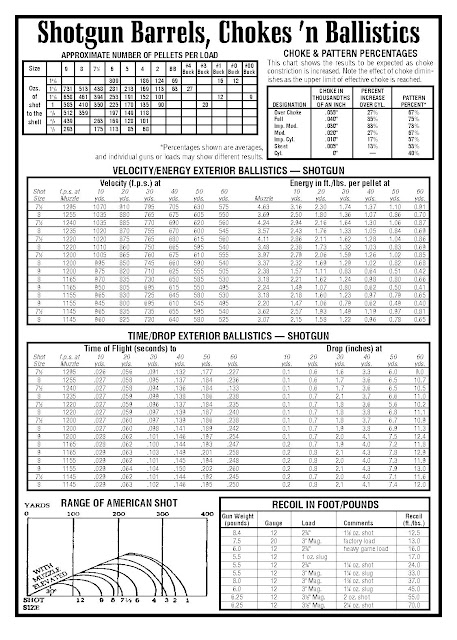How Far Will Birdshot Travel? Birdshot can travel surprisingly far – potentially several hundred yards. However, its effective range, meaning the distance at which it can reliably hit and incapacitate a target, is significantly shorter. This article explores the factors influencing birdshot travel distance, effective range, and crucial safety considerations.

Image Source: lh4.googleusercontent.com
What Affects Birdshot Range?
Several factors dictate the birdshot travel distance. These include shot size, gauge, muzzle velocity, and environmental conditions.
Shot Size
Larger shot sizes retain energy better and, therefore, travel further. Smaller shot loses velocity and energy more quickly due to air resistance.
| Shot Size | Typical Use | Range Consideration |
|---|---|---|
| #9 (smallest) | Skeet, close-range birds | Shortest range |
| #7 1/2 or #8 | General bird hunting | Moderate range |
| #6 | Pheasant, larger birds | Longer range |
| #4 | Ducks, geese | Longest range (within birdshot spectrum) |
Gauge and Load
The gauge of the shotgun and the load (amount of shot and powder) affect muzzle velocity and the initial energy of the shot cloud. Higher muzzle velocities generally translate to longer birdshot range. A 12-gauge shotgun usually propels a larger payload at a higher velocity than a 20-gauge, although specific loads can vary considerably.
Muzzle Velocity
Measured in feet per second (fps), muzzle velocity is the speed at which the shot leaves the barrel. Higher velocity gives the shot more energy to overcome air resistance, increasing its travel distance. However, excessively high velocities can lead to pattern deformation and reduced accuracy at longer ranges.
Environmental Factors
- Wind: Wind can significantly alter the trajectory of birdshot, especially smaller sizes. A crosswind will push the shot cloud off course, and a headwind will slow it down, reducing birdshot travel distance.
- Air Density: Higher air density (e.g., on a humid day or at lower altitudes) increases air resistance, slowing the shot down more quickly.
- Elevation: Altitude can affect range. Higher altitudes have less air density, which can slightly increase the distance.
Defining Effective Range of Birdshot
While birdshot can travel hundreds of yards, the birdshot effective range is much shorter. Effective range refers to the distance at which the shot pattern is dense enough to reliably hit and incapacitate a target. This is critically important for hunting ethically and safely.
Pattern Density
Birdshot pattern distance refers to how the shot spreads out as it travels downrange. As the shot cloud moves further from the muzzle, it expands, decreasing the density of pellets in any given area. A pattern that is too sparse will result in missed shots or wounded game.
Energy at Impact
The individual pellets must retain enough energy at impact to penetrate feathers and tissue and inflict sufficient damage to quickly incapacitate the target. Birdshot lethality at range decreases rapidly as pellets lose velocity.
Species and Target Size
The size and resilience of the target animal also affect effective range. Smaller birds require fewer pellets for a clean kill than larger, tougher birds like geese.
Rule of Thumb: Effective Range
While there is no single definitive answer, a common rule of thumb for the birdshot effective range is typically within 25-40 yards. Beyond this distance, the pattern becomes too sparse, and individual pellets lose too much energy to reliably ensure a clean kill. For larger fowl like geese, the maximum effective range with larger birdshot sizes (e.g., #2 or BB) may extend to 45-50 yards under optimal conditions, but responsible hunters will strive to keep their shots within more conservative distances.
Dangers of Excessive Birdshot Range
Shooting at targets beyond the birdshot effective range not only increases the risk of wounding instead of killing the game, but also significantly raises safety concerns.
Risk of Stray Pellets
Birdshot can travel hundreds of yards, posing a risk to people, animals, and property well beyond the intended target area. Even pellets that have lost significant velocity can still cause injury, especially to eyes.
Lack of Accuracy
At extended ranges, even slight variations in wind or shooter technique can cause the shot to stray far off course.
Ethical Hunting Concerns
Wounding an animal instead of killing it quickly is unethical and causes unnecessary suffering. Responsible hunters understand the limitations of their equipment and skills and avoid taking shots beyond the effective range.
Safety Distances and Best Practices
Adhering to established birdshot safety distance guidelines and practicing responsible shooting habits are essential to preventing accidents.
General Safety Rules
- Always identify your target and what is beyond it: Be absolutely sure of your target and ensure there are no people, animals, buildings, or other objects in the line of fire or in the potential path of stray pellets.
- Never shoot at the sky: Shot fired into the air will eventually come down, potentially causing injury or damage.
- Be aware of your surroundings: Pay attention to the terrain, vegetation, and wind conditions.
- Wear appropriate safety gear: Eye and ear protection are essential.
- Store firearms safely: Keep firearms unloaded and secured in a safe place when not in use.
Estimating Safe Distances
There is no absolute safe distance for birdshot, as the maximum birdshot range can vary. However, consider these guidelines:
- Minimum safe distance downrange: As a general rule, consider a minimum distance of 400-500 yards downrange to be potentially within reach of some pellets.
- Lateral safe distance: Be aware that wind can carry pellets to the side. Ensure a clear safety zone extending at least 100-200 yards on either side of the intended target, depending on wind conditions.
Educating Others
Promote responsible shooting practices and educate others about the potential dangers of birdshot. Share information about birdshot range, effective range, and safety guidelines.
Experimenting with Patterning
Patterning your shotgun is essential to determine its effective range with different loads and chokes.
What is Patterning?
Patterning involves shooting your shotgun at a large piece of paper or cardboard at various distances to see how the shot spreads. This allows you to determine the pattern density and identify any gaps or inconsistencies.
How to Pattern
- Set up a target: Use a large piece of paper or cardboard at least 30 inches in diameter. Draw a central aiming point.
- Shoot at different distances: Start at 20 yards and move back in 5-yard increments.
- Analyze the pattern: Count the number of pellets that hit within a 30-inch circle around the aiming point. Note any gaps or inconsistencies in the pattern.
- Calculate pattern percentage: Divide the number of pellets inside the 30-inch circle by the total number of pellets in the load. This gives you the pattern percentage.
Choke Selection
The choke of your shotgun affects the birdshot spread at distance. A tighter choke (e.g., full choke) will produce a denser pattern at longer ranges, while a more open choke (e.g., improved cylinder) will produce a wider pattern at shorter ranges. Experimenting with different chokes can help you optimize your shotgun for specific hunting situations.
| Choke | Pattern Density at 40 Yards | Recommended Use |
|---|---|---|
| Cylinder | Least dense | Very close range (10-20 yards) |
| Improved Cylinder | Moderately dense | Close to medium range (20-30 yards) |
| Modified | Dense | Medium range (30-40 yards) |
| Full | Most dense | Longest range (40+ yards) – Use with caution, may create too tight a pattern at close range |
Legal Considerations
Local laws and regulations may impose restrictions on the use of birdshot, including restrictions on shot size, hunting seasons, and prohibited areas. Be sure to familiarize yourself with all applicable laws and regulations before using birdshot.
Conclusion
Understanding the factors that influence birdshot range, birdshot effective range, and the potential dangers of stray pellets is essential for responsible and ethical shooting. By practicing safe shooting habits, patterning your shotgun, and adhering to all applicable laws and regulations, you can minimize the risk of accidents and ensure a safe and enjoyable shooting experience. Remember: never take a shot unless you are absolutely sure of your target and what lies beyond.
Frequently Asked Questions (FAQ)
Q: What is the maximum distance birdshot can travel?
A: Birdshot can travel up to 400-500 yards or even further under ideal conditions. However, its effective range is much shorter.
Q: What is the effective range of birdshot for hunting?
A: The effective range is typically 25-40 yards, depending on shot size, gauge, and the size of the target.
Q: Is birdshot lethal at long ranges?
A: Birdshot lethality at long range decreases significantly as pellets lose velocity and spread out. While pellets can still cause injury, the likelihood of a clean kill diminishes greatly.
Q: What factors affect the range of birdshot?
A: Shot size, gauge, muzzle velocity, wind, air density, and choke constriction all affect birdshot range.
Q: How can I determine the effective range of my shotgun with birdshot?
A: Patterning your shotgun with different loads and chokes is the best way to determine its effective range.
Q: What is the safest distance to be away from someone shooting birdshot?
A: It’s best to be at least 400-500 yards downrange and 100-200 yards to either side of the shooter, depending on the wind. However, the safest practice is to never be in the potential line of fire.
Q: Can birdshot penetrate walls or other structures?
A: Yes, birdshot can penetrate walls, windows, and other structures, especially at close range. This is another reason to be sure of your target and what’s beyond.
Q: What is the best shot size for hunting dove?
A: Typically, #7 1/2 or #8 shot is a good choice for dove hunting.
Q: Can I use birdshot for self-defense?
A: While birdshot can be used for self-defense, it’s generally not recommended due to its limited penetration and the increased risk of stray pellets injuring unintended targets. Other ammunition types may be more suitable.
Q: Is it legal to shoot birdshot into the air?
A: It is generally illegal and extremely dangerous to shoot birdshot into the air. What goes up, must come down, and can cause serious injury or death.

Hi, I’m Candace Wafford, a travel and food blogger based in Lexington, Kentucky. As a corporate traveler, I’ve had the chance to explore a lot of places, but now I’m on a mission to travel full-time. My goal? To figure out how to take my cat along for the adventure! Here at destinationdorworth.com, I share my experiences and tips on outdoor activities, travel, and of course, the best food spots I come across. I hope my blog inspires you to explore more and eat well on your journeys!
